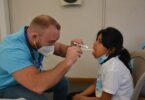An increasing number of men at low risk of developing prostate cancer are choosing a wait-and-see approach in lieu of treatment options such as radiation or surgery.
In 2010, 14.5% of men with low-risk prostate cancer used a wait-and-see approach, also known as active surveillance. By 2015, that figure was 42.1%, according to new research published in JAMA. Over the same period, the rate of men in this group having their prostate gland removed declined from 47% to 31%, while those who received radiation therapy declined from 38% to 26%.
Among men with intermediate risk, the active surveillance rate increased from 5.8% to 9.6% over the time period. The percentage of men in this group having either their prostate removed or having radiation only hardly declined. Among men with high risk, the rate of active surveillance remained the same, at about 2% over the period. Having a prostatectomy increased from 38% to 43%, while radiation therapy decreased from 60% to 55%.
The results of the study are not all that surprising, considering that in 2010 the National Comprehensive Cancer Network changed its guidelines, recommending active surveillance for men at low risk or those with a short life expectancy.
Prostate cancer is the second most common cancer among men worldwide. Last year, 1.3 million new cases were diagnosed.
This article originally appeared in Medshadow.org
Here’s more from Just Care:
- Advil and Aleve increase risk of stroke and heart attack
- Pharmaceutical companies use scare tactics to mislead public about generics
- Congress should scrap the Social Security cap
- Aerobic exercise may be best medicine for your brain and body
- How to get free or low-cost dental care










